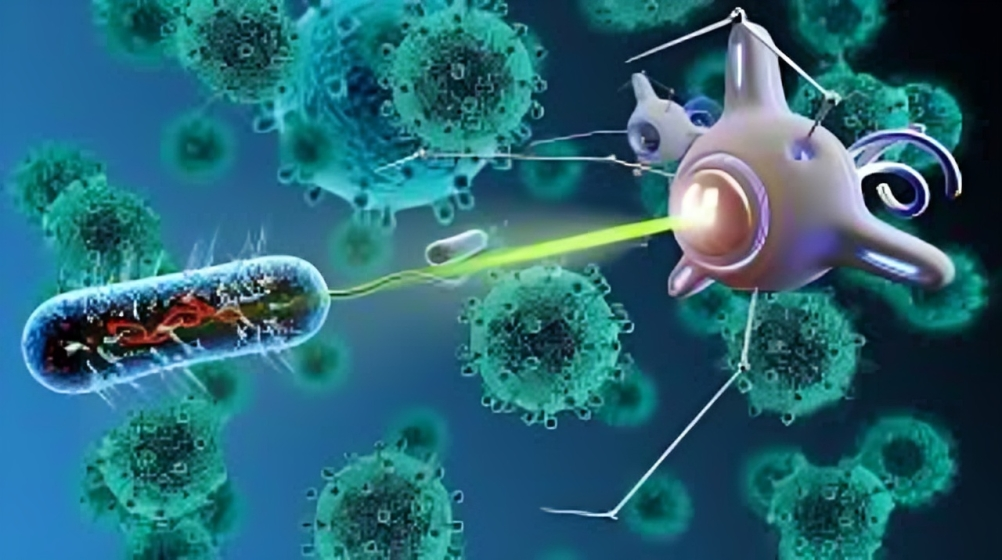Introduction
The field of nano technology is ushering in a new era of innovation by manipulating matter at the atomic and molecular levels. With applications spanning medicine, electronics, energy, and materials science, nanotechnology promises to revolutionize our world in unprecedented ways. This article explores the history, applications, and future prospects of nanotechnology, highlighting its transformative impact on various industries.
The Evolution of Nanotechnology
Historical Background
Physicist Richard Feynman originally popularized the idea of nano technology in his 1959 talk, “There’s Plenty of Room at the Bottom,” when he described his vision for manipulating individual molecules and atoms. Norio Taniguchi subsequently came up with the term “nanotechnology” in 1974. Since then, the area has advanced from theoretical notions to real-world applications because to developments in manufacturing processes and microscopy.
From Concept to Reality
With the invention of the atomic force microscope (AFM) in 1986 and the scanning tunneling microscope (STM) in 1981, scientists were able to see and work with materials at the nanoscale. These discoveries have made it possible for nanotechnology to expand quickly, combined with advances in materials science and molecular biology.
Applications of Nanotechnology
Medical Nanotechnology
The field of nano medicine is one of the most potential applications of nanotechnology, with nanomedicine revolutionizing therapeutics.
- Targeted Drug Delivery: Drugs may be delivered directly to damaged cells via nanoparticle engineering, reducing adverse effects and increasing effectiveness. This strategy is especially
beneficial for cancer treatment, where targeted delivery can reduce the damage to healthy tissues. - Diagnostics: Early molecular illness detection is made possible by nanoscale sensors and imaging agents, which results in more precise diagnosis and individualized therapy regimens.
- Regenerative Medicine: New approaches to organ and tissue repair are being provided by the use of nanomaterials in the creation of scaffolds that promote wound healing and tissue regeneration.
Nanoelectronics
Nanoelectronics entails using nanotechnology to the development of electrical devices that are quicker, smaller, and more effective.
- Transistors: Nanotechnology has enabled the development of transistors at the scale of a few nanometers, allowing for the continued miniaturization of electronic circuits as predicted by Moore’s Law.
- Quantum Dots: These nanoscale semiconductor particles have unique optical and electronic properties, making them useful in applications such as display technologies, solar cells, and quantum computing.
- Flexible Electronics: Nanomaterials like graphene and carbon nanotubes are being used to create flexible, stretchable electronic devices that can be integrated into clothing, medical devices, and more.
Energy Applications
Nanotechnology is playing a crucial role in the development of sustainable energy solutions.
- Solar Cells: Nanomaterials are improving the efficiency and reducing the cost of solar cells, making solar energy more accessible and viable.
- Batteries: Nanotechnology is enhancing the performance of batteries by increasing their energy density, charging speed, and lifespan.
- Catalysts: Nanocatalysts are being used to improve the efficiency of chemical reactions in processes such as fuel production and pollution control.
Materials Science
Because of the special qualities that set them apart from their bulk counterparts, nanomaterials are causing advancements across a wide range of sectors.
- Strength and Durability: Nanocomposites are materials reinforced with nanoparticles, offering enhanced strength, durability, and resistance to wear and tear.
- Lightweight Materials: Nanomaterials can be used to create lightweight, high-performance materials for applications in aerospace, automotive, and construction.
- Self-Healing Materials: Nanotechnology is enabling the development of materials that can repair themselves when damaged, extending their lifespan and reducing maintenance costs.
Future Directions in Nanotechnology
Ethical and Environmental Considerations
It is critical to discuss the moral and environmental ramifications of nanotechnology’s broad usage as it develops.
- Safety and Toxicity: Understanding the health and environmental impact of nanomaterials is crucial for developing safe and sustainable nanotechnology applications.
- Regulation and Governance: Establishing guidelines and regulations for the production, use, and disposal of nanomaterials will help ensure their responsible development and deployment.
Advanced Nanomaterials
The creation of sophisticated nanomaterials with specialized characteristics for particular uses is where nanotechnology is headed.
- Metamaterials: These artificially engineered materials have unique properties, such as negative refractive index, which can be used in applications like superlenses and cloaking devices.
- Nanocomposites: Combining different nanomaterials can lead to the creation of composites with synergistic properties, opening up new possibilities for material design.
Integration with Other Technologies
In order to provide creative solutions, nanotechnology is increasingly being combined with other cutting-edge technologies.
- Artificial Intelligence: AI-driven nanotechnology can accelerate the discovery and design of new nanomaterials, as well as optimize their applications in various fields.
- Biotechnology: The convergence of nanotechnology and biotechnology is leading to breakthroughs in areas such as synthetic biology, bioelectronics, and nanomedicine.
- Quantum Computing: Nanotechnology plays a critical role in the development of quantum computers, which have the potential to revolutionize computing by solving complex problems beyond the capabilities of classical computers.
Conclusion
The use of nano technology is changing how we tackle problems in materials science, electronics, energy, and medicine. Nanotechnology provides creative ideas that may greatly enhance our quality of life and promote sustainable development by modifying matter at the atomic and molecular levels.











